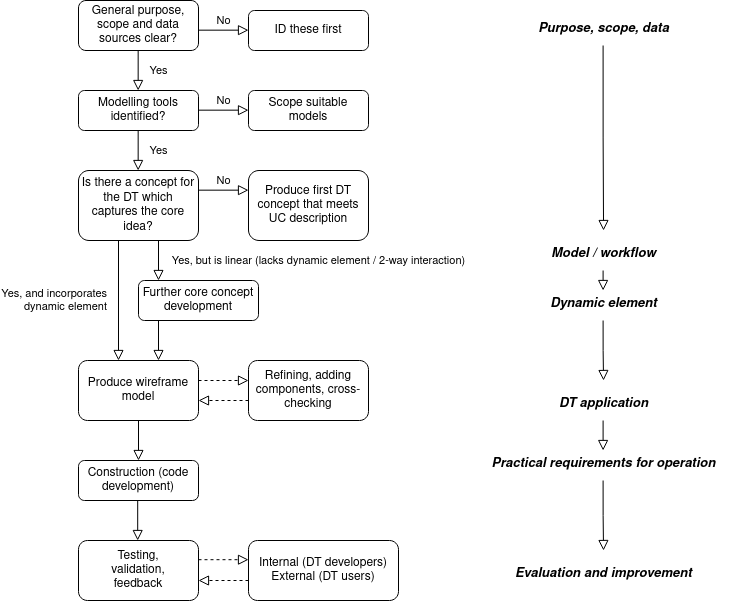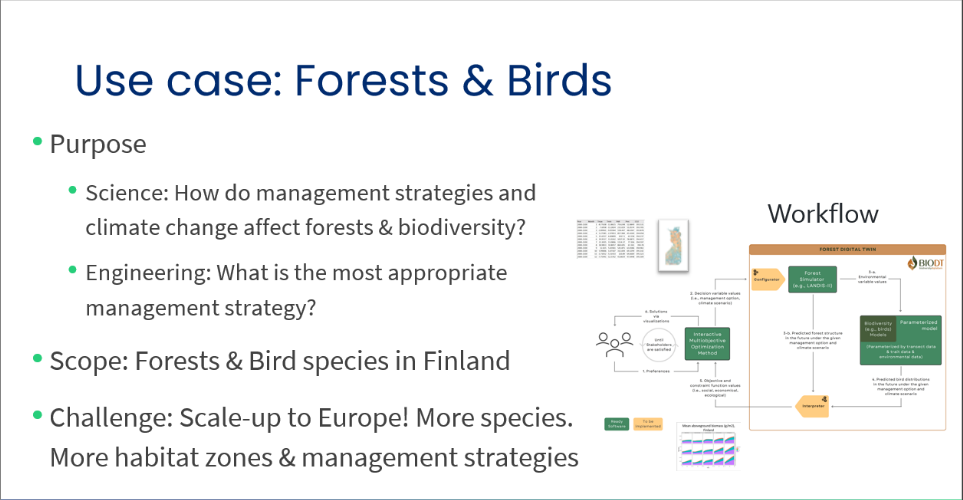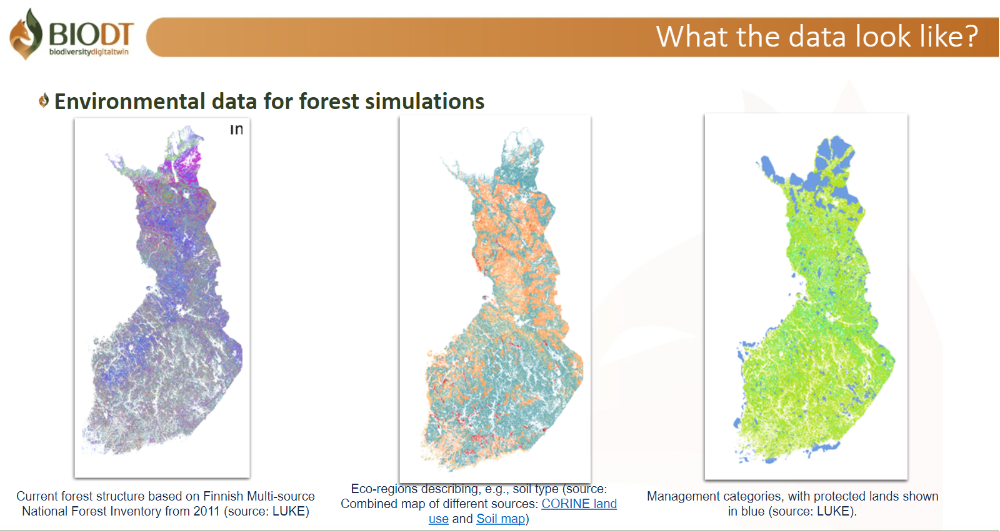
By Merijn de Bakker & Jeroen Broekhuijsen, TNO
During the WP6 workshop in Jyväskylä, Finland, a new template was created to describe the use cases of the project and how digital twins fit into these use cases. The template is based on an existing seven-step-approach by the EU project Change2Twin. Given this approach, Jesse Harrison (CSC, BioDT Project Manager) developed a process guide to go through these steps in order to create a functional twin.

The template guides the use case owner in answering general questions like: what is the purpose, scope, user, data needed, model implemented and output created in a compact format. The result is a combination of descriptive text and wireframe describing the flow of data and the different parts that make up the Digital Twin and how the user will interact with it.

A wireframe answering to project needs
The wireframe needs to explain the following characteristics:
- Model inputs and outputs: both model parameters (configuration) and observation data (input). These input streams can have different formats, update intervals and are not the same for the different parts in the simulation model. Further, observation data can be used for model simulation or during model validation and calibration.
- How the model will be calibrated and evaluated using automation. Which sets of data are part of training/calibration and which sets are used for testing/evaluation.
- Which parts of the workflow can be scaled up using the HPC cluster by LUMI Supercomputer.
- In case of multiple stakeholders, describe the differences between goals/tasks and scenario’s for the application part of the digital twin. How will these users interact with the Twin?

Finally, a more elaborate description of each part in the wireframe (both data and code) is described in the rest of the template to ensure data is described with clear meaning, structure, formats and source information.
